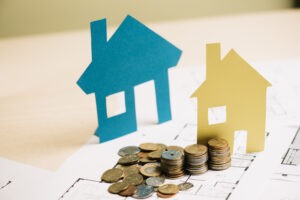Determining how much rent you can afford is a critical step in securing a comfortable living situation while maintaining financial stability. This process involves assessing your income, expenses, and financial goals to arrive at a realistic budget. Let’s explore this topic further, tailored to South African audiences.
Understanding Your Budget
To begin, calculate your monthly income after taxes, including all sources such as salaries, freelance work, and investments. Subtract your monthly expenses, which encompass utilities, groceries, transportation, insurance, debt payments, and savings contributions. This calculation provides a clear view of your discretionary income.
Applying the 30% Rule
Financial experts often advise spending no more than 30% of your gross income on housing costs, including rent and utilities. This rule acts as a guideline to help you determine an appropriate rent budget. For instance, if your annual gross income is R400,000, the maximum recommended monthly rent would be R10,000.
Additional Considerations when Renting
1. Rent Trends: It’s essential to be aware of rent trends in South Africa. Research median rental prices in your desired location to align your budget with prevailing market rates.
2. Financial Goals: Consider your other financial goals, such as saving for emergencies, retirement, or major purchases like a home. Allocate a portion of your discretionary income towards these objectives before finalizing your rent budget.
3. Hidden Costs: Factor in additional expenses related to renting, such as security deposits, application fees, renter’s insurance, and potential maintenance costs. These hidden costs can impact your overall budget.
Steps to Determine Rent Affordability
Following these steps can help you gauge how much rent you can afford:
1. Calculate Income: Sum up all sources of income, including side jobs and assistance like government subsidies.
2. Evaluate Expenses: Analyze your spending habits over the past few months to understand where you can cut back. Categorize expenses as “need-to-have” and “nice-to-have.”
3. Savings Goals: Determine how much you should save each month for emergency funds, retirement, and other financial goals.
4. Factor in Moving Costs: Consider one-time moving expenses like broker fees, movers, application fees, and security deposits.
5. Determine Max Rent Budget: After accounting for income, expenses, savings goals, and moving costs, calculate your maximum budget for rent.
Bottom Line
Ultimately, finding the right balance between rent affordability and your lifestyle priorities is key. Consider whether you prefer a more lavish living space with fewer savings or a more modest accommodation that allows for aggressive saving towards future goals. By following these steps and understanding your financial landscape, you can confidently determine how much rent you can afford in South Africa.












